-
TrackoBit
Manage commercial vehicles with the new-age Fleet Management Software
TrackoBit -
TrackoField
Streamline your scattered workforce with Field Force Management Software
TrackoField -
Features Resources
-
Blog
Carefully curated articles to update you on industrial trends. -
White Paper
Insightful papers and analysis on essential subject matters. -
Glossary
Explore an alphabetical list of relevant industry terms. -
What’s New
Get TrackoBit & TrackoField monthly updates here. -
Case Study
Explore the cases we solved with our diverse solutions. -
Comparisons
Compare platforms, features, and pricing to find your best fit.
-
About Us
Get to know TrackoBit: our team, ethos, values, and vision. -
Careers
Join the most dynamic cult of coders, creatives and changemakers. -
Tech Support
Learn about our technical support team and services in detail. -
Events
Check out the exhibitions where we left our marks and conquered. -
Contact Us
Connect with us and let us know how we can be of service.
Comparing ADAS Rules by Country: Risks, Requirements & Penalties
- Author:Anvesha Pandey
- Read Time:7min
- Published:
- Last Update: May 6, 2025
Table of Contents
Toggle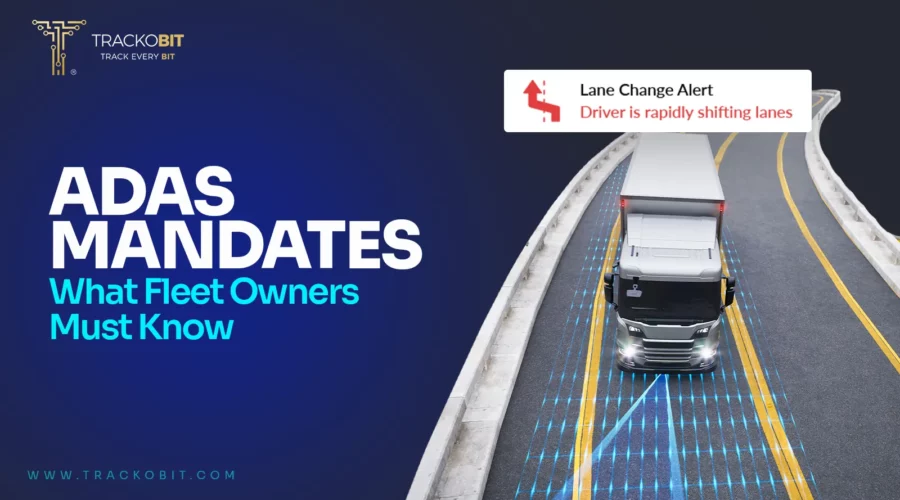
Why ADAS matters for commercial fleets? Read this blog to understand “WHY” & how SaaS based fleet techs are helping in meeting ADAS compliances!
Table of Contents
Toggle
Okay! So, you have planned the most efficient route, are very punctual with deliveries and trained drivers but without Advanced Driver Assistance Systems, you’re leaving your operation exposed.
Governments worldwide are mandating ADAS in commercial vehicles—non-compliance could cost you a quarter’s worth of profits in fines.
Infact, if we look into the numbers, the reports IIHS states that the forward collision warning system reduces rear-end crashes by 27%.
ADAS compliance is a serious concern for commercial fleets. In fact, being non-compliant invites scrutiny, fines, and operational risks. Let’s dive into what’s legal, what’s changing, and why it matters.
Why ADAS Matters for Commercial Fleets?
ADAS or Advanced Driver Assistance Systems are a suite of technologies made to increase the safety, alertness and surveillance of the vehicles & operators altogether. They are designed to improve on-road safety. They facilitate safety through real-time alerts & automated responses (in advanced vehicles).
These systems help drivers in various tasks with the help of sensors, cameras & AI. They also monitor the vehicle’s surroundings, help in identifying potential hazards (Lane Drifting, over speeding or Ignoring Traffic Signs) & a lot more.
With features like
- Forward collision warnings,
- Lane departure alerts
- Signal Volitation…
ADAS helps drivers navigate demanding routes with greater confidence and fewer errors.
It not only reduces the risk of accidents and vehicle downtime but also aids in staying compliant.
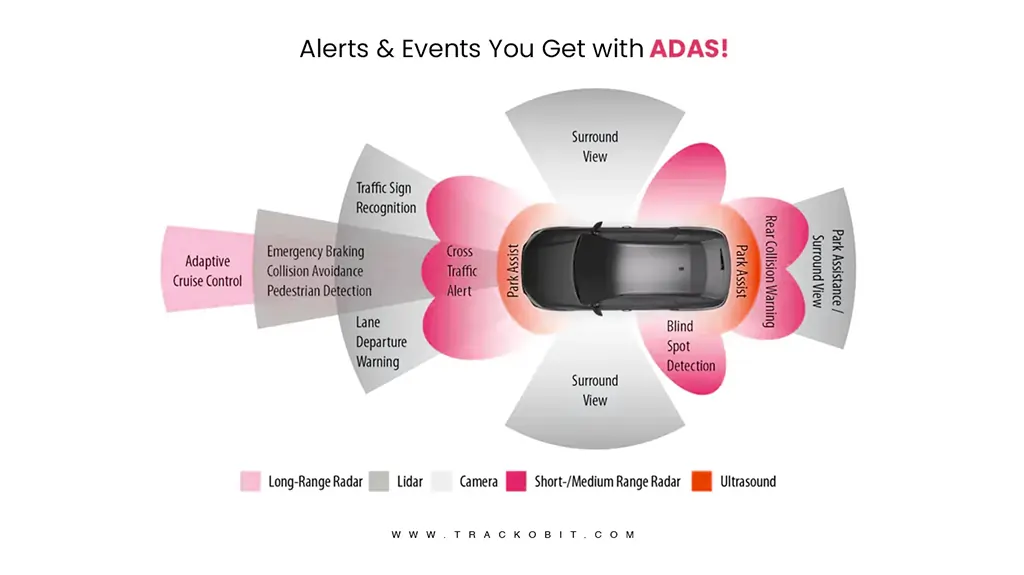
Events you get notified about with ADAS!
✅A Quick Checklist- Why ADAS Really Matters
- It helps prevent accidents with real-time alerts and automation.
- Lowers repair, insurance, and downtime costs.
- Supports driver confidence, safety, and retention.
- Keeps your fleet compliant with regulations.
- Protects brand reputation by promoting road safety.
- Prepares fleets for future-ready, semi-autonomous mobility.
Global ADAS Regulations in 2025: A Country-Wise Overview
First, a look at ADAS regulations in Africa and Latin America and further a look at what’s going around the globe.
Africa: South Africa Leads Regulatory Efforts
Authorities in South Africa to improve safety are necessitating ADAS and AV regulations. The Department of Transport shared how it is all set to lay some legalities. It also shared rules to enforce self-driving vehicles by 2027.
This initiative aims to address road safety, emissions, and congestion. Further creating a conducive environment for AV testing and development.
Latin America: Advancing with Safety Mandates
Ongoing, parts of Latin America are seeing great use and adoption of technology. Let’s look at what the future holds for some of its countries.
- Brazil– Implemented CONTRAN Resolution 910/2022. This mandates ESC and AEB in all new vehicles by 2024. This regulation affects approximately 2.3 million new vehicles annually.
- Mexico– Regional guidelines are emerging (especially for the urban areas). It helps to facilitate autonomous vehicle trials and address traffic congestion.
- Argentina- Argentina is taking baby steps towards ADAS regulations. Currently, there are no specific fines for non-compliance. But the government is exploring ways to improve road safety. Further this may include future mandates on the specific technology.
Overall, the region is experiencing a shift towards semi-autonomous driving.
Now that we have insights into these two countries let’s have a quick look at what’s happening round the globe…
Other Countries Leading with ADAS Regulations & Mandates
A. China
The country banned the use of “smart driving” and “autonomous driving” in vehicle advertisements. This step is strictly taken for safety concerns. Automakers must now obtain official approval before deploying over-the-air updates to driving-related software. Hence, this step places tighter scrutiny on ADAS feature deployment.
B. Germany
The nation was the first to permit Level 4 autonomous cars without a human backup driver to go on public roads.
C. France
Ever since 2025 has started, France has mandated all self-driving cars to duly add black-box recorders. Why? So that it is easy to assess accidental events responsibility. Under the European Union’s General Safety Regulation 2 (GSR2), effective from 2024, all new vehicles registered in France must be equipped with specific ADAS features, including
- Intelligent Speed Assistance
- Lane Keeping Systems
- Driver Drowsiness and Attention Warning
- Reversing Detection Systems
Penalties for Non-Compliance:
While France does not impose fines solely for the absence of ADAS features, failure to comply with GSR2 mandates can result in:
- Vehicle Registration Denial: Vehicles lacking mandatory ADAS features may not be registered, effectively barring them from legal operation.
- Operational Restrictions: Non-compliant vehicles may face limitations or prohibitions on certain roads or zones.
D. India
The Ministry of Road Transport and Highways (MoRTH) is working towards making ADAS features like electronic stability control (ESC), autonomous emergency braking (AEB), and lane departure warnings mandatory in new vehicles.
Mandatory ADAS Features for Commercial Vehicles:
The Ministry of Road Transport and Highways (MoRTH) has announced that, effective April 2026, all new buses and trucks must be equipped with the following ADAS features:
- Advanced Emergency Braking System- Automatically applies brakes to prevent collisions.
- Driver Drowsiness and Attention Warning System- Monitors driver alertness and provides warnings.
- Lane Departure Warning System- Alerts drivers when the vehicle unintentionally departs from its lane.
- Blind Spot Information System- Enhances detection of pedestrians and cyclists in blind spots.
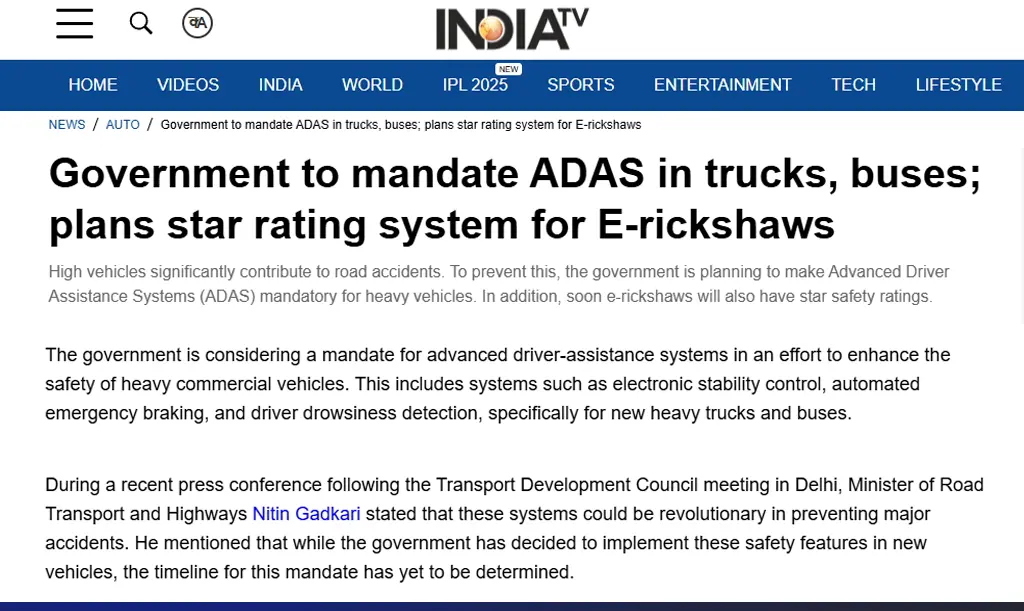
A sneak peek into the HEADLINES!
How Do These Regulations Impact Commercial Fleets?
ADAS regulations significantly impact commercial fleets. To add more, they accelerate the shift towards a safer, more efficient, and compliant operation environment.
Here’s how, in detail
1. Mandatory Safety Upgrades
Regulations often require fleets to adopt features like lane-keeping assist, signal violations, and over speeding. This compels fleet operators to upgrade their vehicles or ensure new purchases are compliant.
2. Lower Accident and Insurance Costs
With ADAS reducing human errors, commercial fleets experience fewer collisions. This leads to reduced repair expenses, and potentially lower vehicle telematics insurance premiums over time.
3. Enhanced Driver Monitoring and Training
Fleet managers can use all the ADAS data (like lane departure or freq uent collisions) to monitor driver behavior. Moreover, you can design targeted training programs to improve driver accountability and safety.
4. Initial Costs vs Long-Term Gains
Staying ahead of ADAS mandates ensures legal compliance. This position fleets to operate legally across borders and adapts to evolving laws.
The Role of SaaS-based Fleet Tech in Meeting ADAS Compliance!
SaaS-based fleet management technology is more like the backbone for achieving & maintaining ADAS compliance.
It offers real-time visibility, remote diagnostics, automated alerts, and data-driven insights. This results in keeping fleets safe, legal, and efficient.
Here’s everything you get in detail-
1. Real-Time ADAS Events Monitoring
SaaS fleet monitoring platforms easily integrate with vehicles internal ADAS systems. This helps in continuous monitoring of specific events. These events include lane departures, forward collision warnings, and emergency braking.
Must read: – Implementing Real-time Tracking For Fleet Management
2. Data Centralization & Reporting
All ADAS-triggered events are logged and visualised over analytical dashboards. Having this makes it easier to generate compliance reports and prove adherence to safety regulations.
3. Driver Training & Behavioral Feedback
SaaS solutions use ADAS data. This hleps identify risky driver patterns and provide personalized feedback or automated coaching. Additionally, these platforms provide users with DVIR’s. Further ensuring that drivers regularly inspect and report. Also, they offer RAG reports based driving ratings.
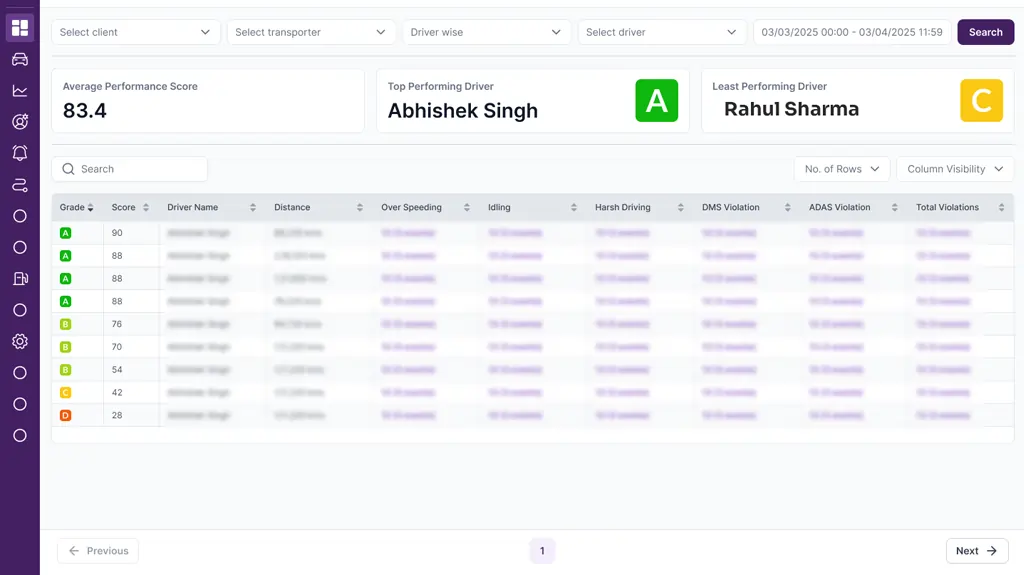
UI of Driver Score Card
4. Data Security & Compliance Documentation
Cloud-based tech provides secure data storage, version-controlled logs, and instant access to compliance records. This further simplifies audits and inspections.
How TrackoBit Helps Keep Up with Compliant ADAS Implementation?
If you’re planning to invest in an ideal fleet safety software, TrackoBit is one such SaaS based platform that you must consider investing in.
Here are reasons why to invest in TB-
1. Seamless ADAS Integration
TrackoBit effortlessly integrates with ADAS-enabled top dashcams and sensors. This helps to capture real-time alerts such as lane departure warnings, forward collision alerts, etc. Further ensuring timely responses and full visibility into on-road behavior.
2. Event-Based Video & Incident Logging
Every safety-critical event is automatically recorded and stored as video footage. This helps you analyse incidents, resolve disputes, & maintain proper documentation for compliance audits.
3. Reduced Reaction Time with Real-Time Alerts
Live ADAS alerts are instantly pushed to both drivers and fleet managers. Further allowing immediate corrective action. Further minimising accident risks and ensuring safer roads.
Conclusion!
The regulations of ADAS are tightening. So, it will never be wrong to say that investing in the right fleet safety system is no longer a choice, it’s essential.
Clearly, it’s time to prioritize prevention. By leveraging this technology, we can improve efficiency and enhance the driving experience. It ensures both vehicles and drivers are better equipped to tackle road challenges.
Looking for top-tier video telematics with ADAS and DMS? TrackoBit delivers advanced solutions to enhance driver safety and vehicle performance.
For more details & getting your hands on one, get in touch today!
FAQs
-
How can TrackoBit assist in ADAS implementation?
TrackoBit can help with ADAS implementation by integrating telematics data. It helps monitor vehicle performance, flag risky driver behavior, and ensure compliances.
-
How can I prepare my fleet for the 2025 ADAS laws?
To prepare for the 2025 ADAS laws, ensure vehicle upgrades, integrate telematics, train drivers, and stay updated on regulations.
-
Can telematics systems support ADAS compliance?
Yes, telematics systems support ADAS compliance. This is done by collecting data from ADAS features & monitoring vehicle performance to ensure regulatory adherence.
-
Are there any penalties for not complying with ADAS rules in India?
Yes, penalties for non-compliance with ADAS rules in India may include fines, restrictions, and increased insurance costs.
Anvesha is a communication specialist at TrackoBit. With a strong background in media and communications, she adds much-needed balance and brevity to TrackoBit’s... Read More
Related Blogs
-
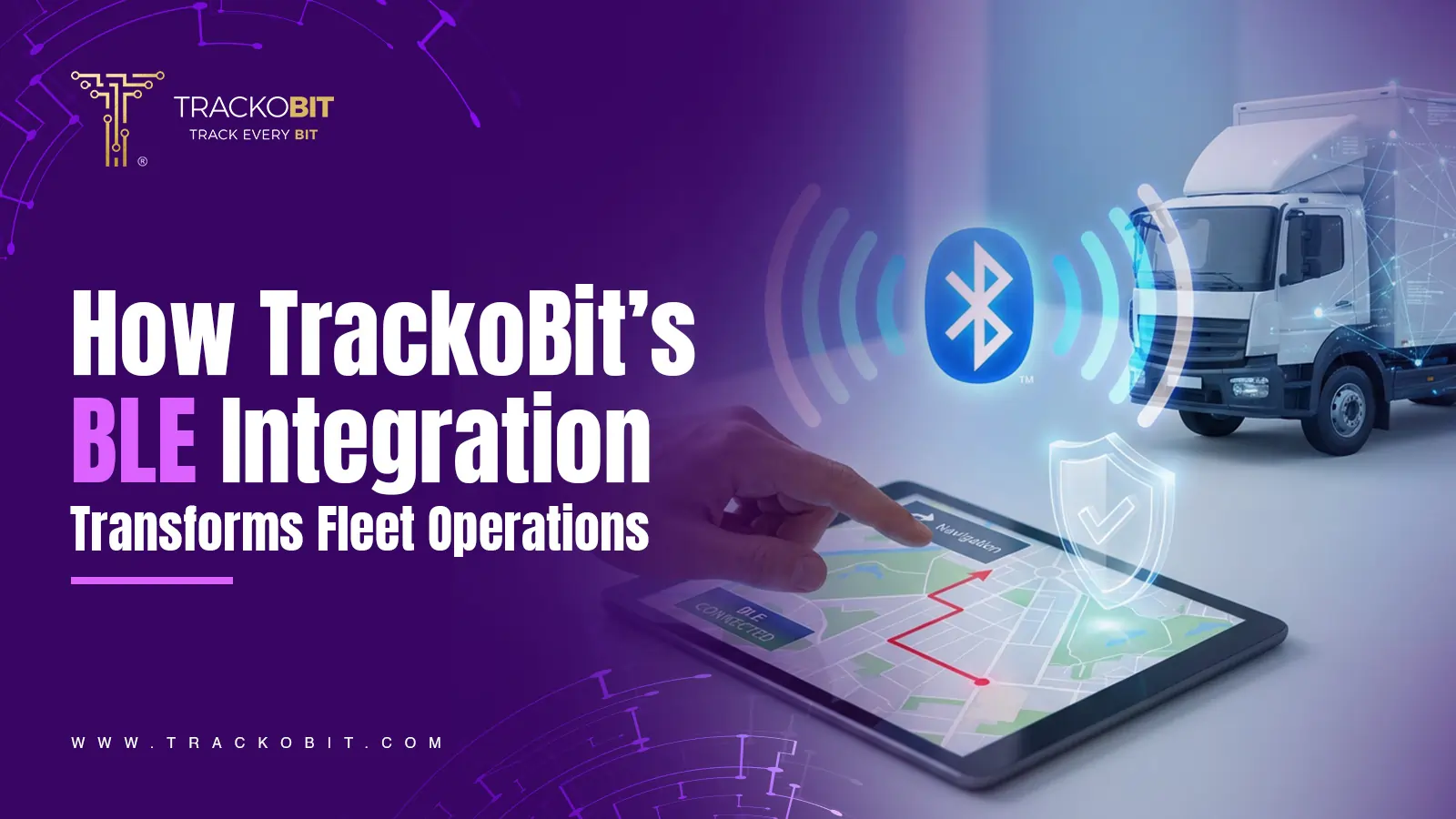
Plug, Pair, Perform TrackoBit Introduces BLE Sensor Integration
Tithi Agarwal November 26, 2025TrackoBit’s BLE Sensor Integration enables wireless, real-time monitoring with faster installs and accurate insights. It improves fleet efficiency, visibility, and…
-
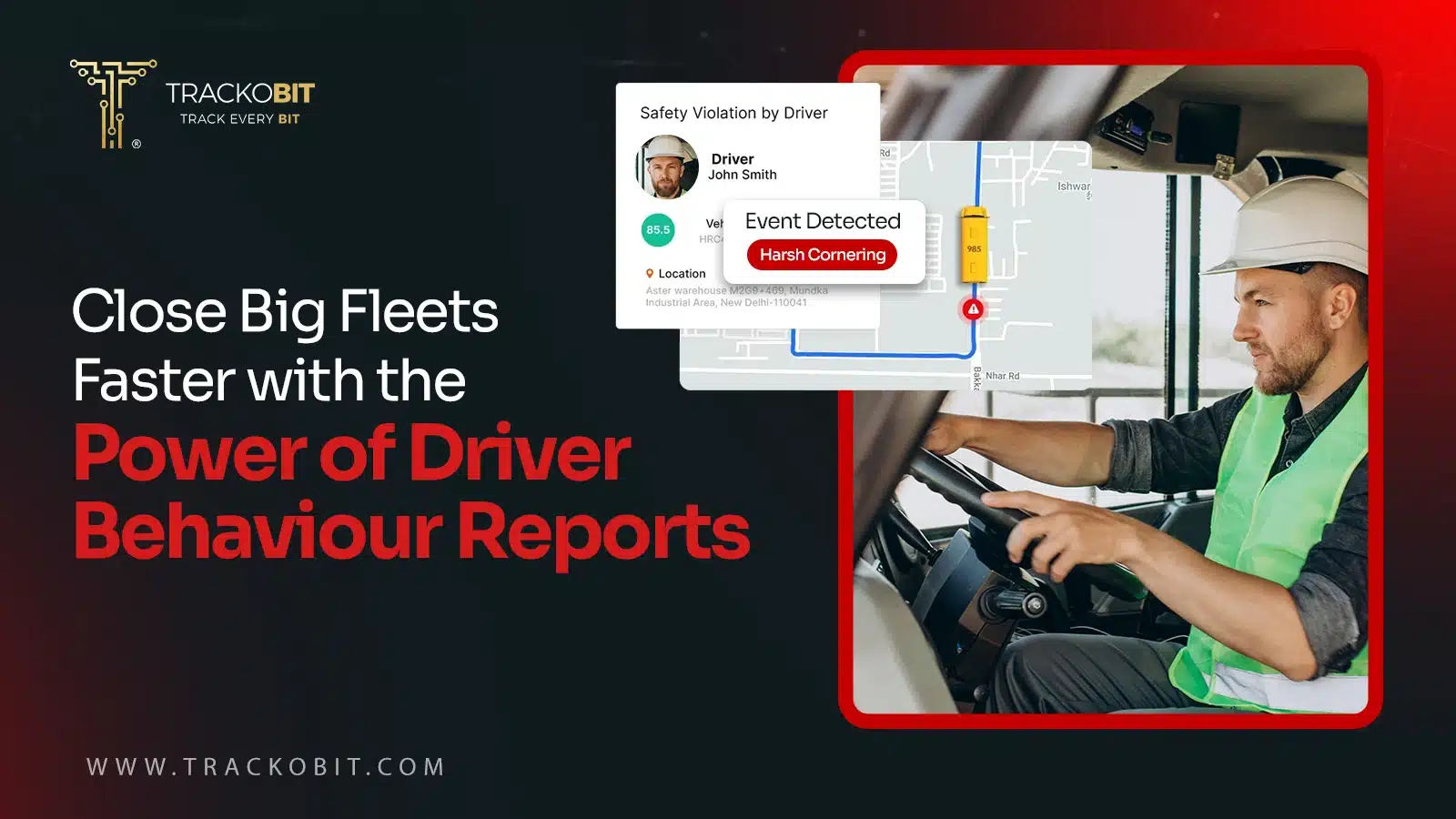
How to Use Driver Behavior Reports as a Sales Hook to Close Big Fleets
Tithi Agarwal October 16, 2025TrackoBit’s driver behavior reports empower fleet providers to win big contracts by showcasing safety, efficiency, and measurable ROI.
-
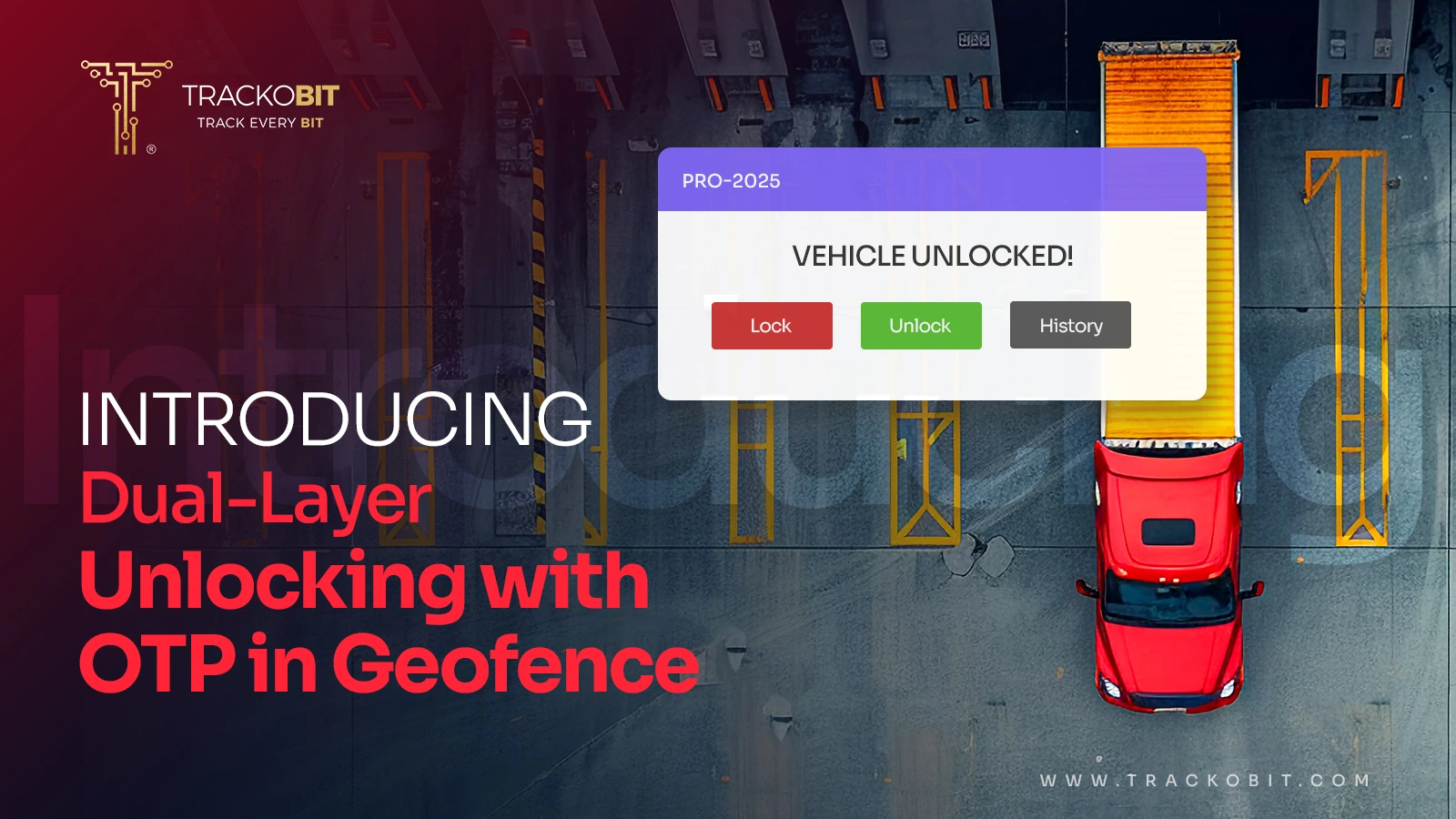
TrackoBit’s Unlocking in Geofence with OTP: Elevating Cargo Protection
Tithi Agarwal September 16, 2025TrackoBit’s latest feature – Unlocking in Geofence with OTP lets you lock out theft and unlock cargo only at the…
-

The Rise of Electric Fleets: Challenges and Opportunities for Businesses
Tithi Agarwal September 4, 2025The global fleet landscape is poised for a decade-long transformation. This change is being powered by electricity. Logistics-led businesses are…

Subscribe for weekly tips to optimize your fleet’s potential!
Your inbox awaits a welcome email. Stay tuned for the latest blog updates & expert insights.
"While you're here, dive into some more reads or grab quick bites from our social platforms!"Stay Updated on tech, telematics and mobility. Don't miss out on the latest in the industry.
We use cookies to enhance and personalize your browsing experience. By continuing to use our website, you agree to our Privacy Policy.


































